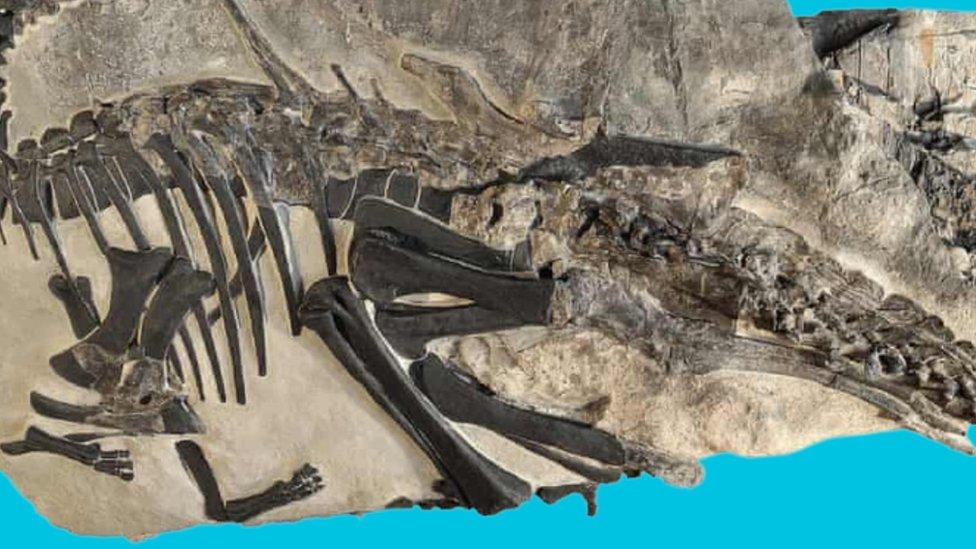Fossils from a herd of 11 dinosaurs have been found in Italy
- Published
- comments

The fossils of a herd of 11 dinosaurs have been discovered in Italy, including the biggest and most complete dinosaur skeleton ever found in the country.
It's unusual because Italy isn't known for having many dinosaur remains and this is the first time a whole entire group has been found. The biggest dinosaur in the group has been named Bruno.
Bruno and the other remains were found in Villaggio del Pescatore, a former limestone quarry close to the north-eastern port city of Trieste.
The fossilised remains belong to a species called Tethyshadros insularis, which roamed the earth 80 million years ago.
Tethyshadros was a beaked animal with a hand formed into a fleshy pad and three-toed feet. It was thought to be five metres in length.
Villaggio del Pescatore first became known for dinosaurs in 1996 after the discovery of a dinosaur skeleton, which was later named Antonio.
"Bruno is the biggest and oldest of the group, and the most complete dinosaur skeleton ever found in Italy," said Federico Fanti, a professor at the University of Bologna and leader of a research team.
"We knew there were dinosaurs at the site after the discovery of Antonio, but up until now nobody actually checked to see how many. What we have now are multiple bones belonging to the same herd."
The fossilised remains of fish, crocodiles and flying reptiles have also been discovered at the site, which formed part of the ancient Mediterranean area 80 million years ago.
This is what the dinosaur would have looked like according to an artist impression
"This is super cool as we can figure out the kind of environment the dinosaurs lived and died in," said Fanti.
"During that period, the area was very close to the shoreline in a tropical, warm and humid environment capable of feeding herds of dinosaurs."
Villaggio del pescatore is a protected area. This means the remains will be protected because of their recognized natural and cultural importance. These areas are usually protected by law.
- Published13 September 2021
- Published26 June 2021
- Published3 December 2021
